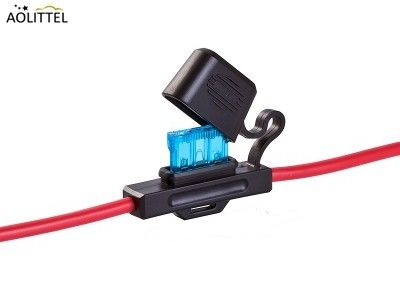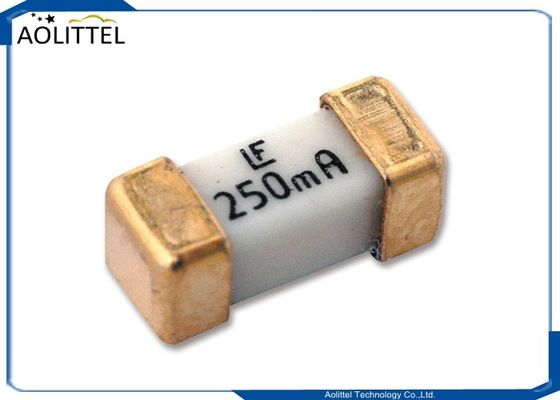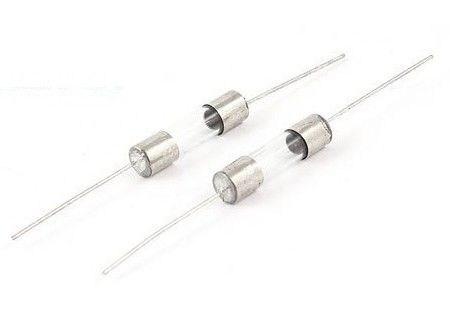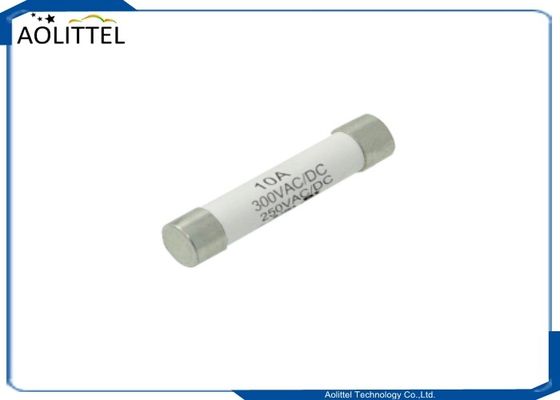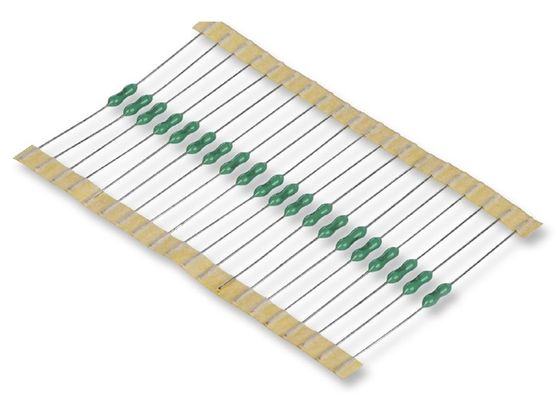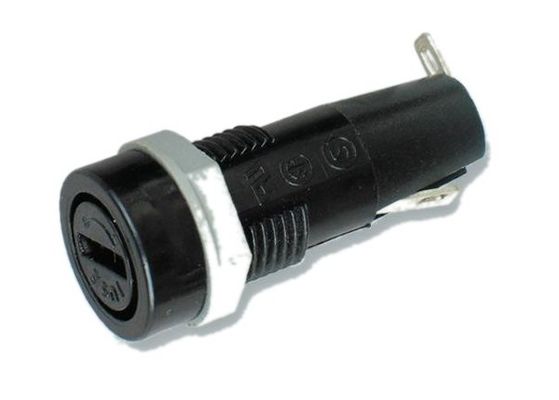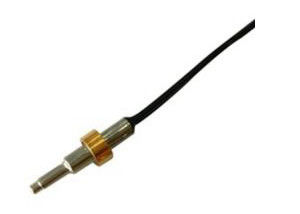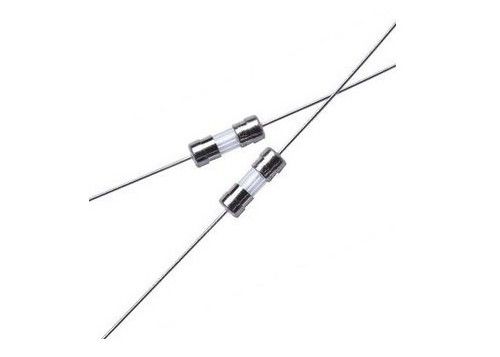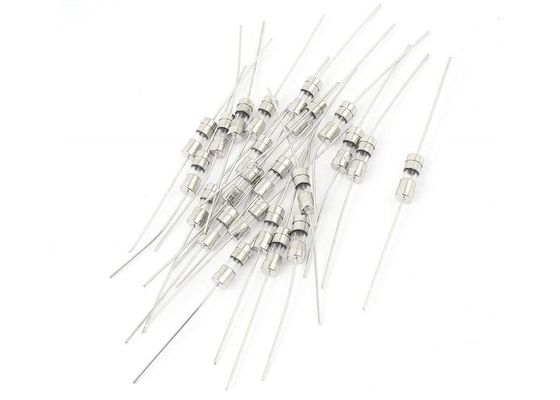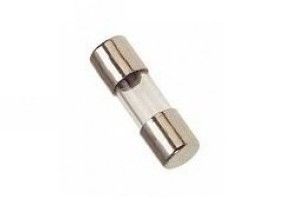Germany VDE 4x11mm Slow Blow Axial Leaded Miniature Time Delay Glass Tube Fuse T5AL250V 5A 250VAC 500PCS Per Bag
Shortcut info
Product name: glass fuse; rated Voltage: AC 250V; rated current: 5A
Function: slow blow; body Size: 11 x 4mm/ 0. 4' x 0. 15' (LED)
Wire Leads length(each): 27mm/ 1 inch
Color: Clear, Silver Tone; material: glass, alloy
___________________________________________________________ Download________
Download________
Specification
A=250V B=125V
|
Part
No.
|
Ampere
Rating
|
Voltage
Rating
|
Max Voltage
Drop (mv)
|
I2TMelting
Integral(A2.S)
|
| TBP0250A |
250mA |
250V |
240 |
0.06 |
| TBP0315A |
315mA |
250V |
220 |
0.09 |
| TBP0400A |
400mA |
250V |
200 |
0.2 |
| TBP0500A |
500mA |
250V |
190 |
0.4 |
| TBP0630A |
630mA |
250V |
180 |
1.0 |
| TBP0800A |
800mA |
250V |
160 |
1.9 |
| TBP1100A |
1A |
250V |
140 |
4.2 |
| TBP1125A |
1.25A |
250V |
130 |
8.7 |
| TBP1160A |
1.6A |
250V |
120 |
10.1 |
| TBP1200A |
2A |
250V |
100 |
20.3 |
| TBP1250A |
2.5A |
250V |
100 |
40 |
| TBP1315A |
3.15A |
250V |
100 |
68 |
| TBP1400A |
4A |
250V |
100 |
100 |
| TBP1500A |
5A |
250V |
100 |
133 |
| TBP1630A |
6.3A |
250V |
100 |
172 |
Certifications
|
Voltage Rating
|
Agency
|
Ampere Range
|
Agency File Number
|
| 250V |
UR |
250mA ~ 5A |
E340427(JDYX) |
| C-UR |
250mA ~ 5A |
E340427( JDYX7) |
| CQC |
250mA ~ 5A |
CQC16012161227 |
| VDE |
500mA,1A,1.25A,1.6A,2A,2.5A,3.15A,5A |
40032053 |
| PSE |
250mA ~ 5 A |
Pending |
| KTL |
250mA ~ 5 A |
Pending |
Standards:In accordance with IEC60127-1, IEC60127-3, GB9364.1, GB9364.3.
Dimension (mm)
Operating Characteristics
|
% of Ampere Rating(In)
|
Blowing Time
|
| 210%*In |
2 min Max |
| 275%*In |
400 ms~10 s |
| 400%* In |
150 ms~3s |
Average Time Current Curves

Installation Recommendations
Propose installation way as following picture.
| A.Horizontal installation |
 |
| B.Vertical installation |
 |
| C.Vertical installation |
 |
Checking and replacing fuses
Procedure
Many electrical devices used in eye care have an externally accessible fuse near the electrical cord (Figure 1) that you can check and replace by following these steps.

Figure 1
- Disconnect the device from the electrical system.
- Remove the fuse from its holder. In some cases you may need a small screwdriver to unscrew the fuse holder cap.
-
Look at the fuse wire. If there is a visible gap in the wire or a dark or metallic smear inside the glass then the fuse is blown and needs to be replaced. If you cannot see whether the fuse is blown, follow steps 4 and 5. If the fuse is definitely blown, go to step 6.
- Set a multimeter (Figure 2) to the resistance or Ω (Ohms) setting.

Figure 2
5.Place one of the multimeter leads on one end of the fuse. Place the other lead on the other end of the fuse. If the reading is between 0 and 5 Ω (Ohms), the fuse is good. A higher reading indicates a bad or degraded fuse. A reading of OL (Over Limit) definitely means a blown fuse.
6.If the fuse is blown, replace the fuse with one that is exactly the same (see panel). Make sure to note the fuse amperage and voltage ratings, which should be marked on the fuse itself (Figure 3) or on the panel label near the fuse holder. Additionally, note the size and whether it is a slow-blow or a fast-blow type fuse. If there are no markings on the fuse itself or on the equipment you must consult the device's operating manual.

Figure 3
General suggestions
*Always disconnect equipment from electrical power before removing a fuse; not doing so may result in serious injury.
*Always replace a fuse with an identical type, and never substitute a fuse with foil or another object. This could lead to electrocution and fires.
*Keep enough stock of the fuses used in your clinic or hospital. Store each type in separate containers with a label describing the fuse's voltage and amperage, whether it is a fast-blow or slow-blow type, the size, minimum number needed (the minimum stock level), and the models of equipment that use each type of fuse.
*Check your stock of fuses frequently and order more fuses when it reaches the minimum stock level.
If possible, tape a spare fuse to the equipment so that it is available when needed.

 Your message must be between 20-3,000 characters!
Your message must be between 20-3,000 characters! Please check your E-mail!
Please check your E-mail!  Your message must be between 20-3,000 characters!
Your message must be between 20-3,000 characters! Please check your E-mail!
Please check your E-mail! 

